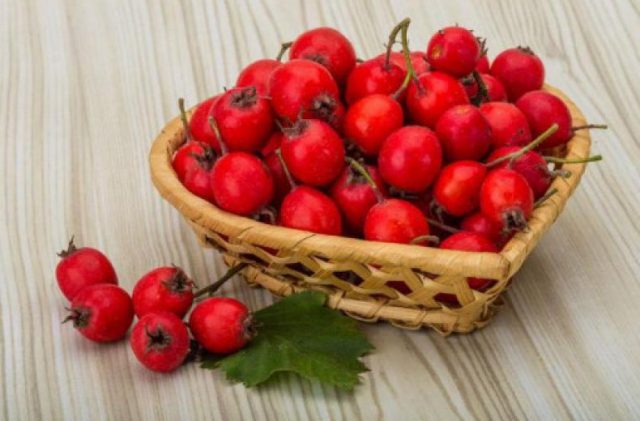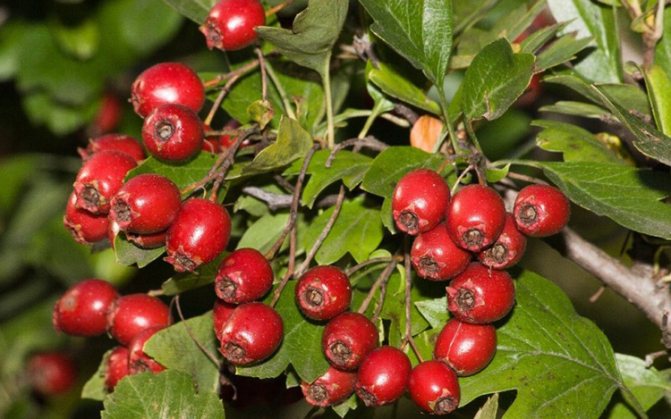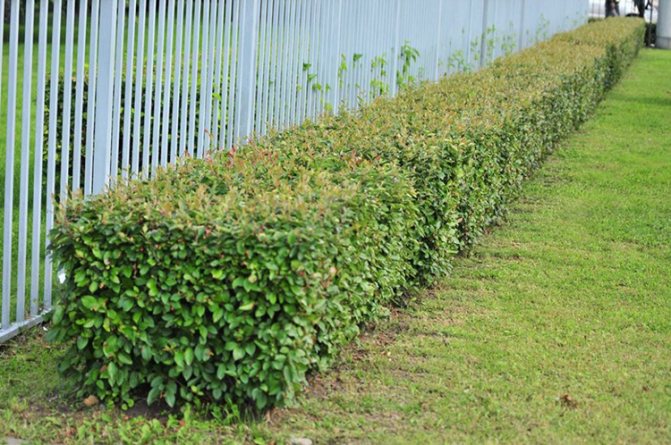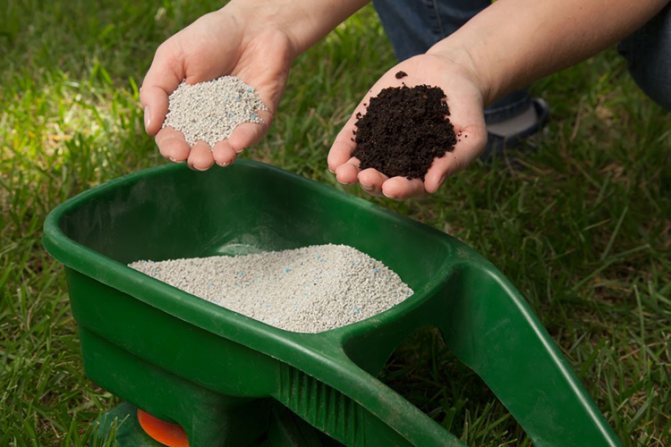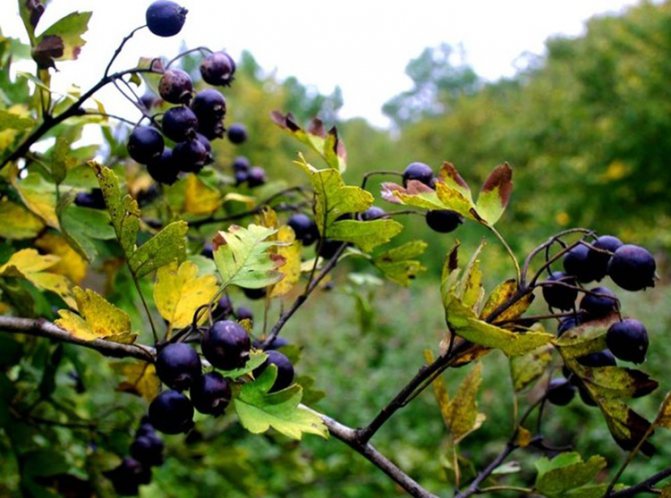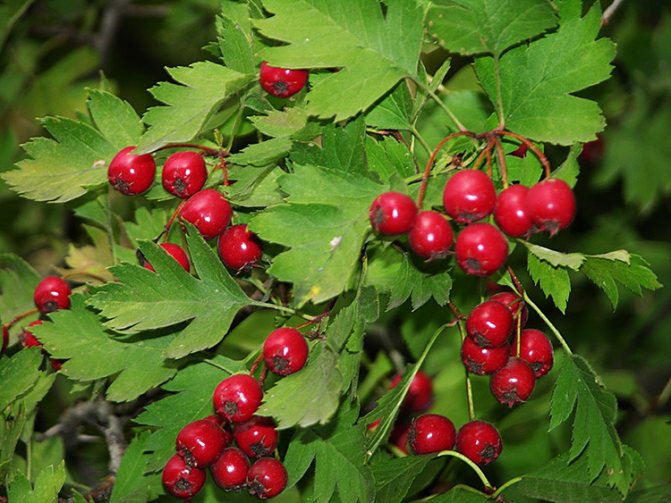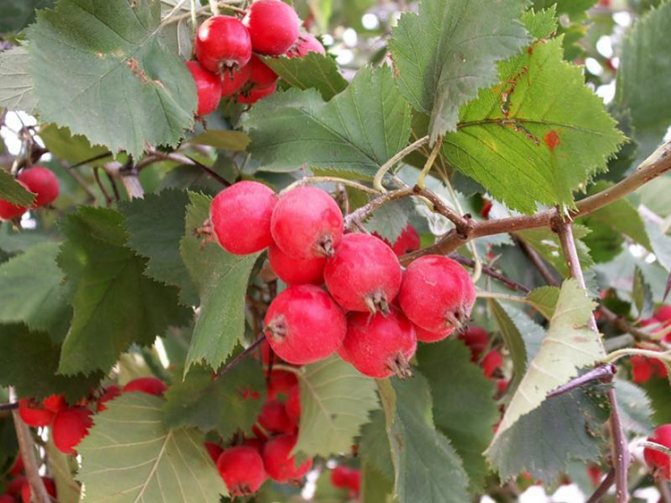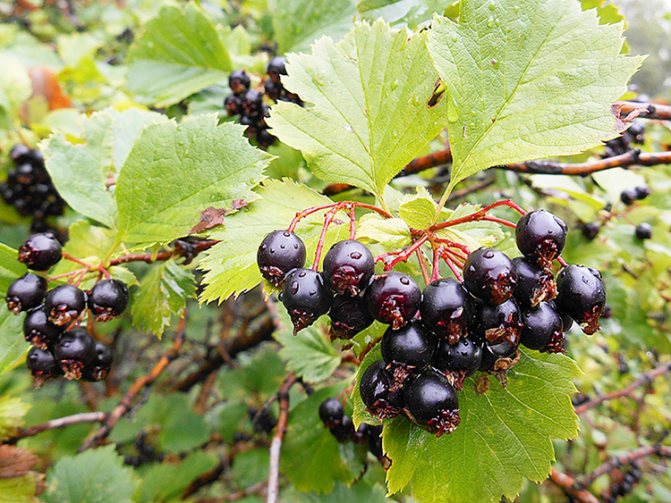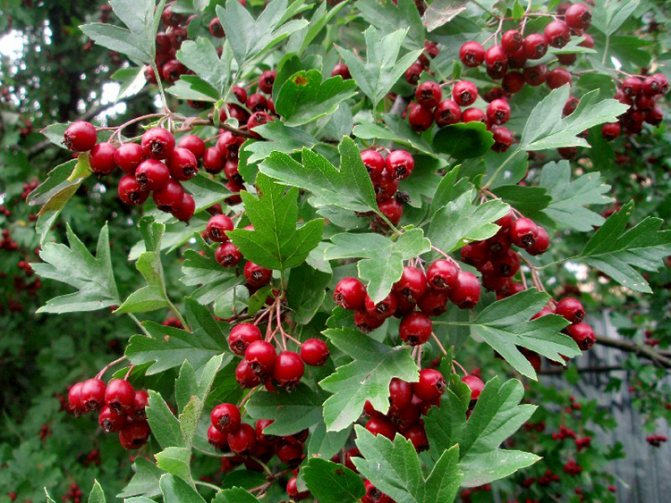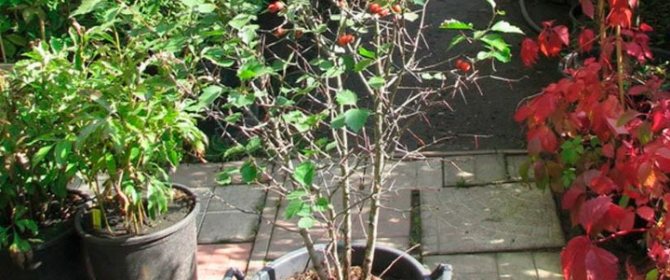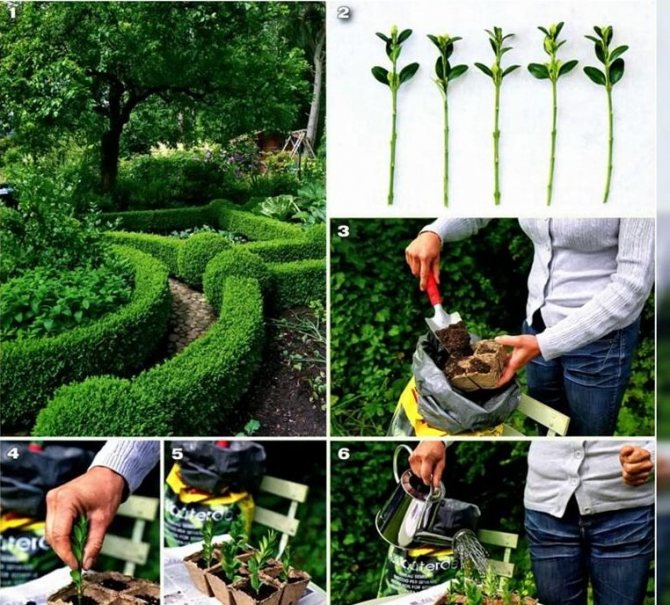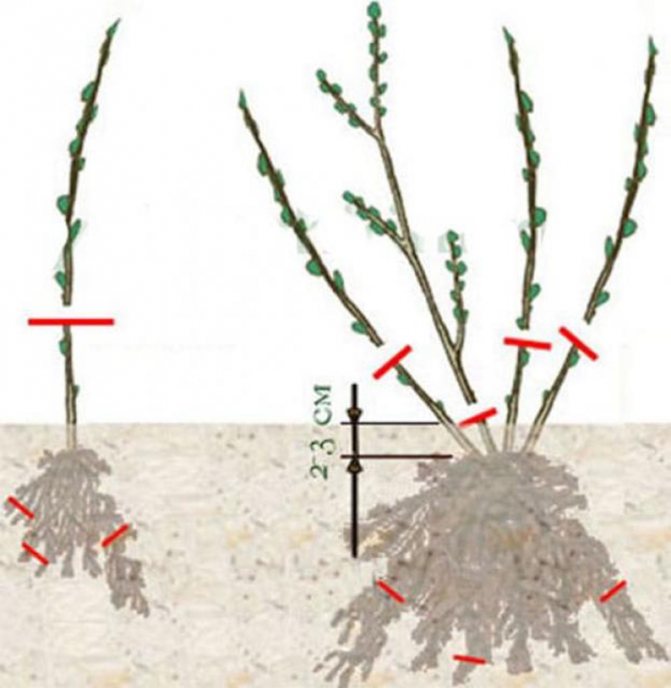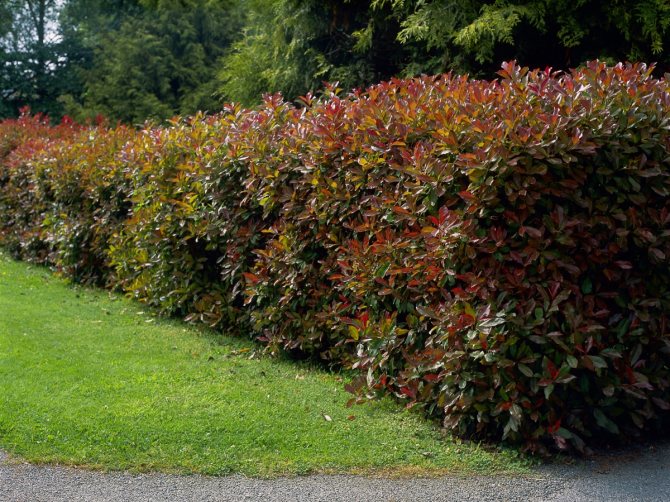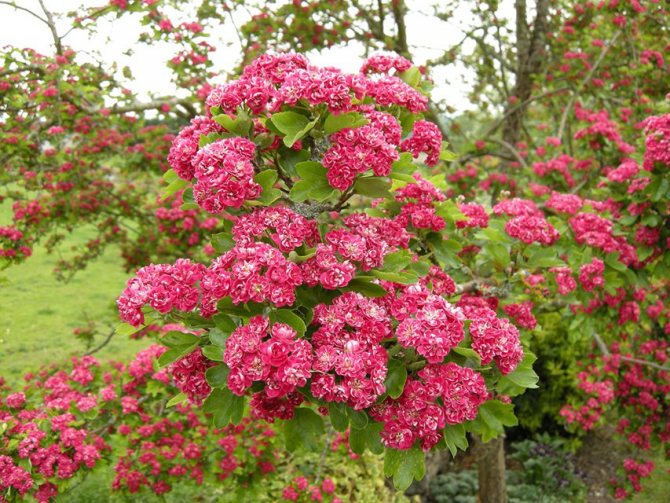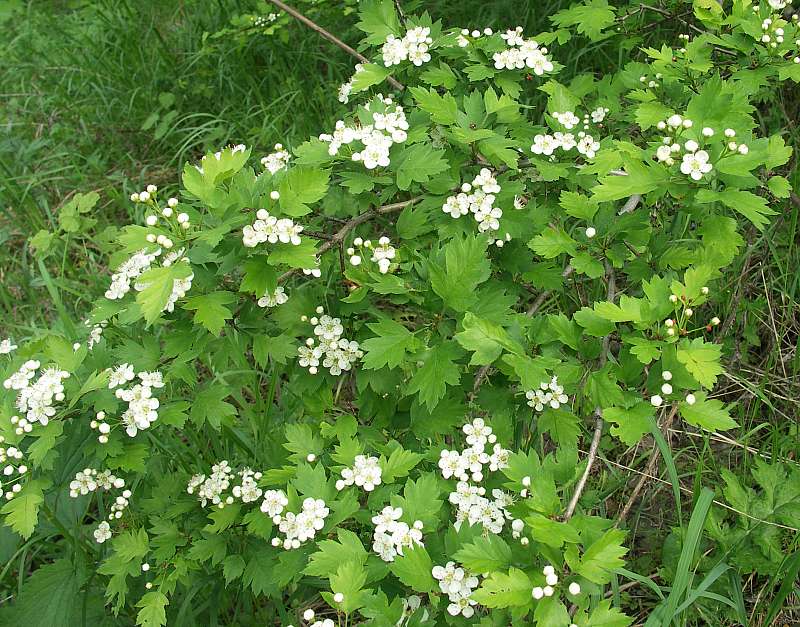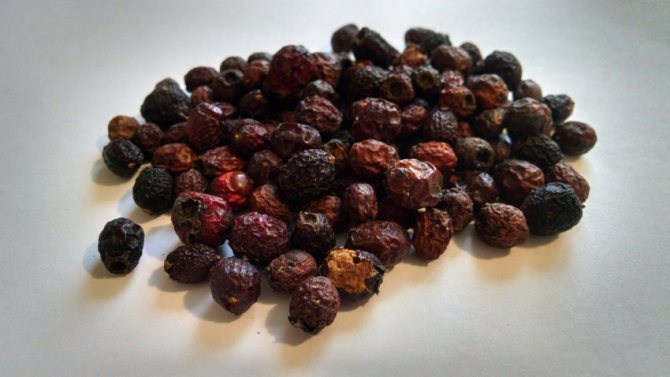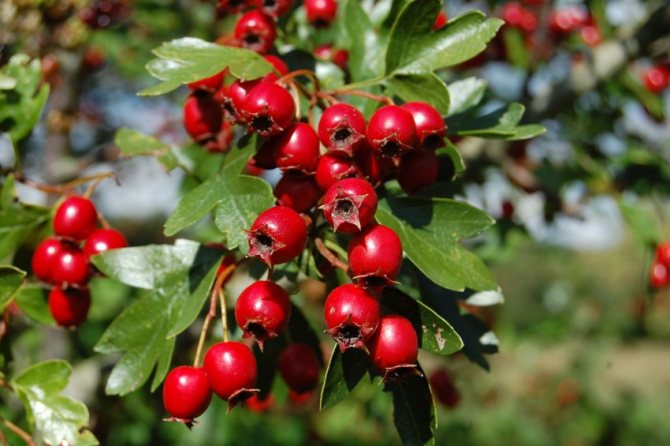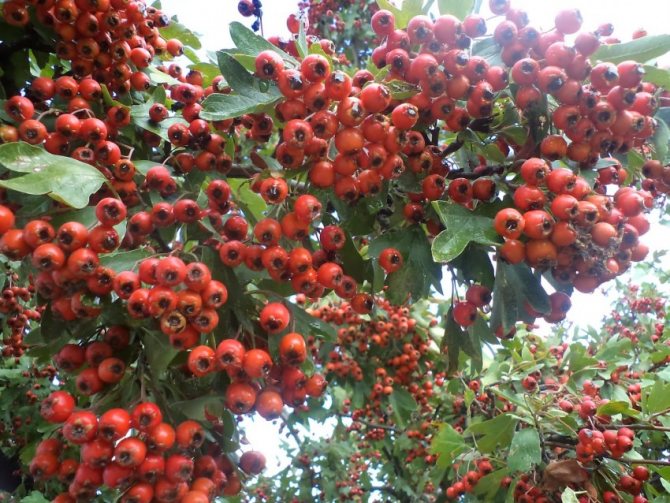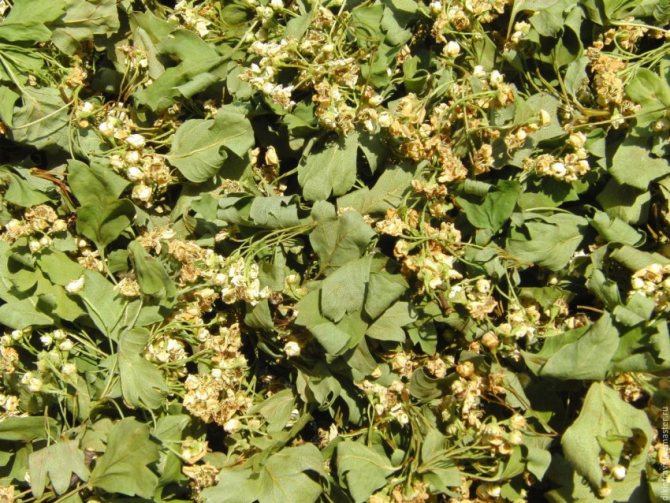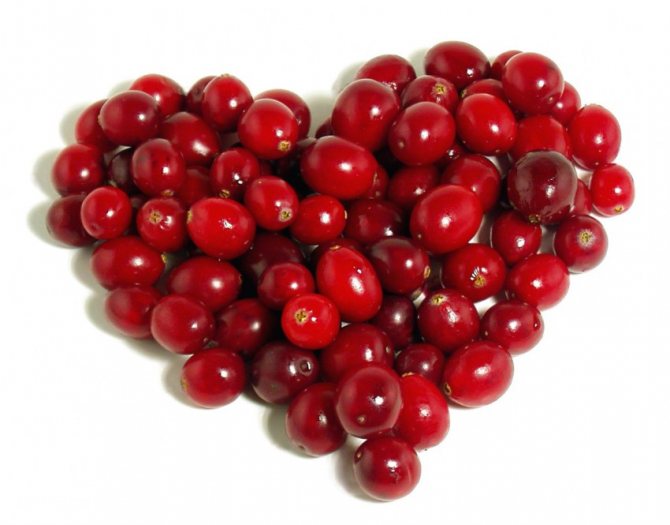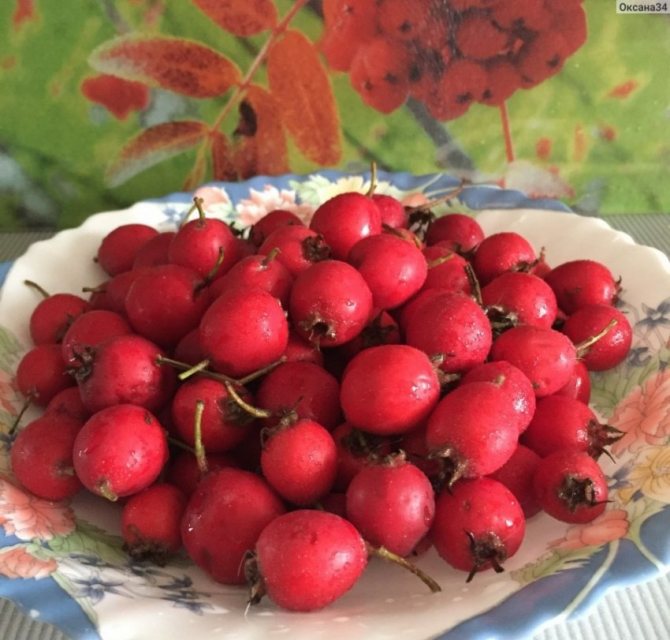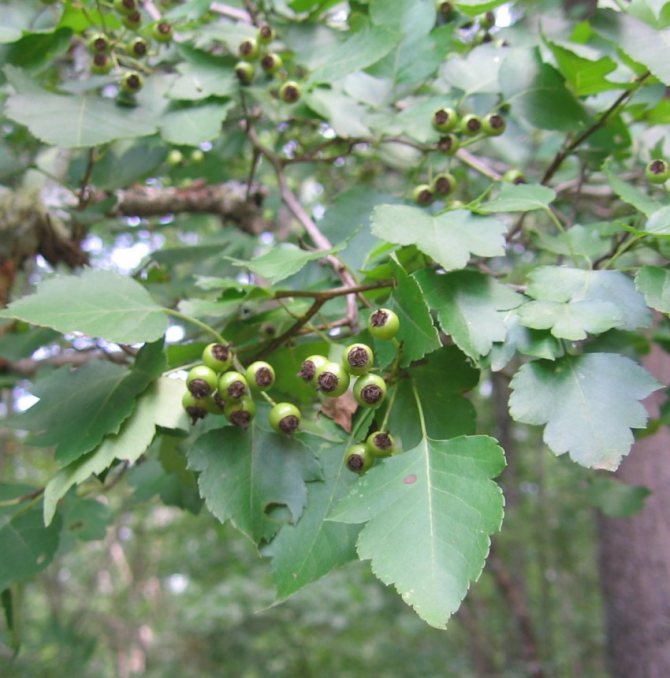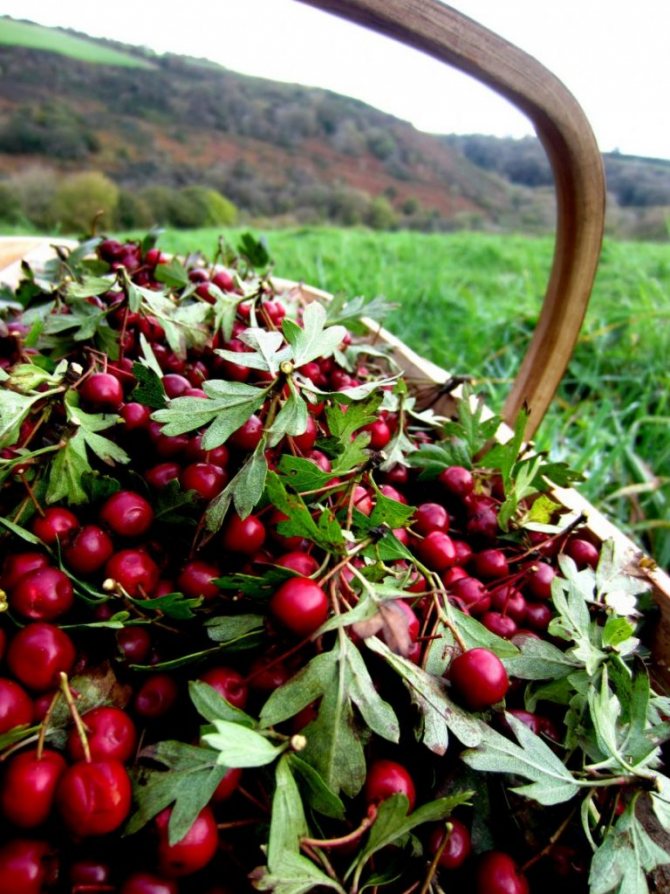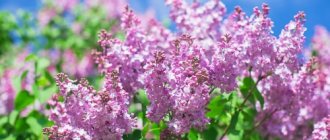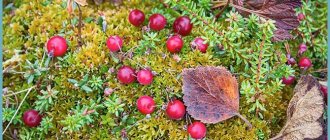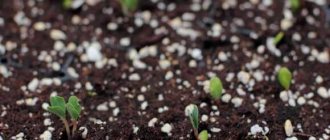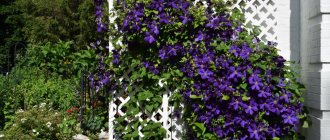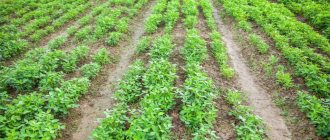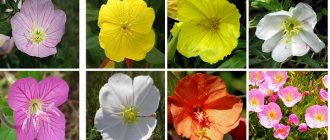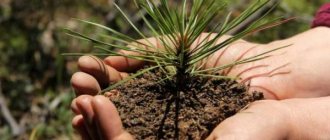The plant spread widely in Russia during the time of Peter 1, since it was considered the main medicine for heart disease. Hawthorn is no less popular now. Hawthorn is a melliferous shrub of the Pink family. It grows from two to six meters in height. It can often be found in personal plots. It can simultaneously perform two functions: to plant greenery, have many medicinal properties and contain a sea of vitamins. It is unpretentious to care for and boasts an attractive appearance. In the article, we will tell you how and where the hawthorn is planted in autumn, as well as give methods of proper plant care.
Hawthorn species
On the territory of the CIS, the following types are widespread:
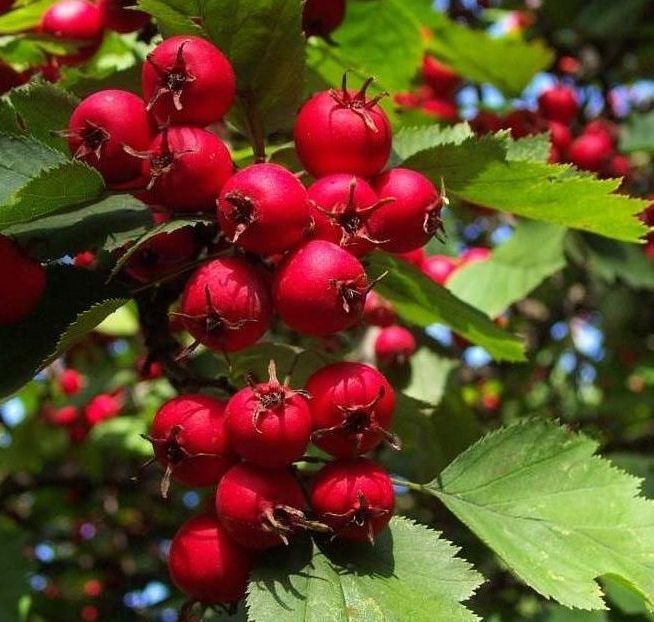
- blood-red hawthorn (Siberian),
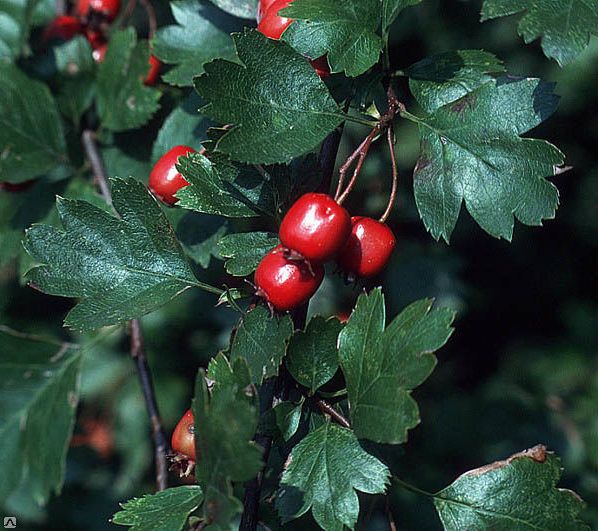

- prickly hawthorn (common hawthorn) - Crataegus oxyacantha L.,
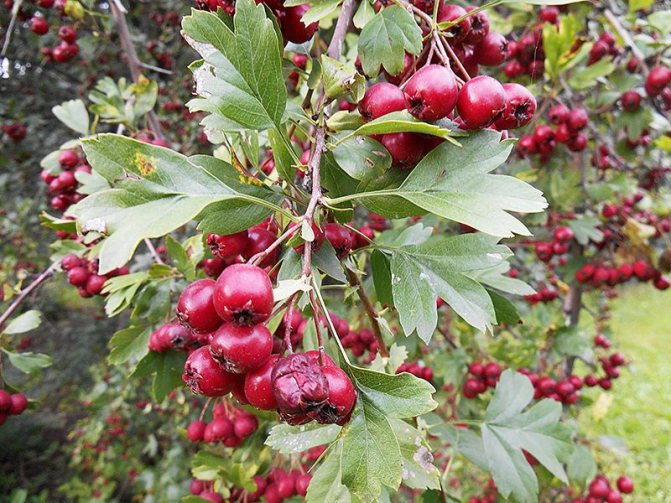

- single-pistil hawthorn (one-seed),
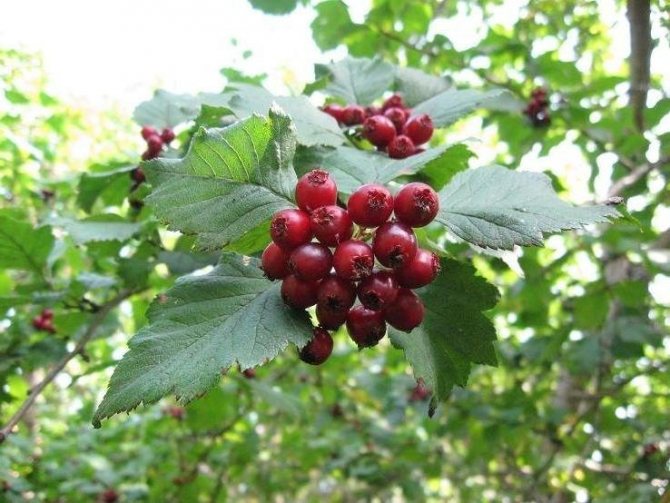

- pentapular hawthorn - Crataegus pentagyna,
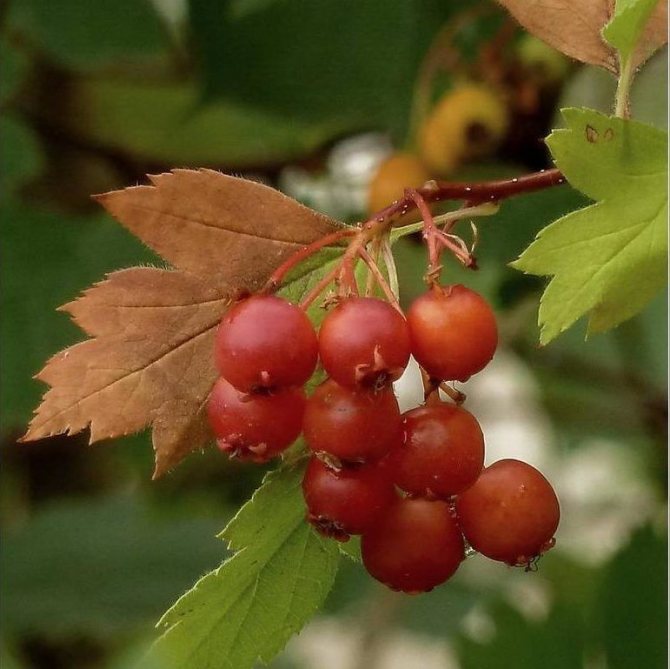

- hawthorn daurian,
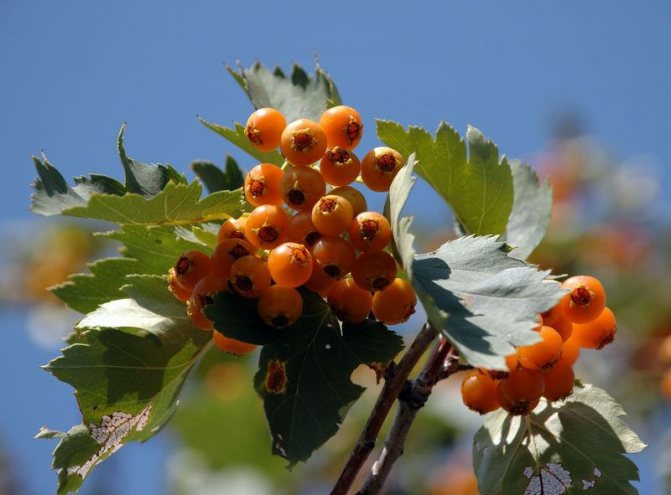

- Altai hawthorn,
- Ukrainian hawthorn,
- Caucasian hawthorn,
- hawthorn crocodile,
- bent-sepal hawthorn, etc.
Although the medicinal and useful properties of the hawthorn of these species are similar, nevertheless, traditional medicine prefers mainly the hawthorn prickly.
In official medicine, blood-red hawthorn has been used for medicinal purposes.
Latin name: Crataegus sanguinea Pall.
Other names: boyarka, glod (glod), glozhina, log, lady.
back to content
Selection of seedlings
- Only plants aged from two to five years old are suitable for transplantation, no more than half a meter in height. Young plants are best grown on their own or purchased from reliable stores.
- The tree should have a lively, well-developed root system - moist, with a lump of earth.
- The trunk should be smooth, with a glossy bark, and no visible damage.
- Before buying, the roots and trunk are carefully examined for the presence of putrefactive formations and mycelium of fungal diseases.
- Any type of hawthorn is suitable for a temperate climatic zone, the main thing is to follow the recommendations.
The common wild hawthorn can be a good stock for both its cultivated varieties and other fruit trees.
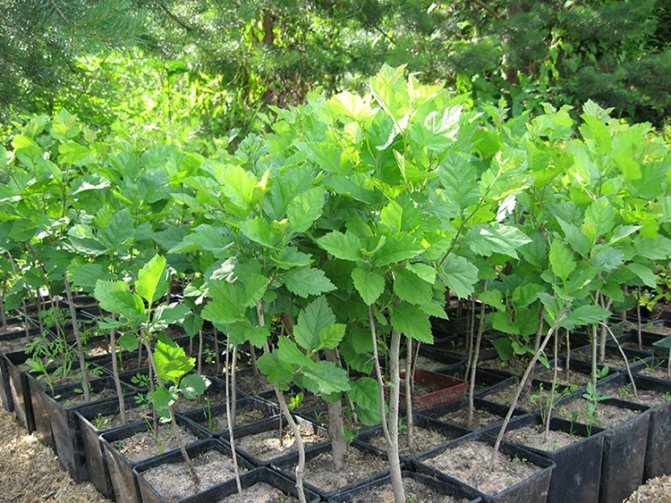

Botanical description of hawthorn
Hawthorn is a large shrub or small tree up to 5 m high (sometimes 10-12 m). Young branches are purple-brown, shiny, covered with rare, thick, straight spines up to 4 cm long.
Leaves are alternate, obovate or broadly rhombic with a wedge-shaped base, pointed, shallowly three to seven-lobed serrate, shortly pubescent on both sides, 2-6 cm long, located on short petioles. The color is dark green in summer, orange-red in autumn.
Flowers with five petals, white or slightly pink, are connected in dense corymbose inflorescences with a diameter of 4-5 cm. They have a weak specific smell.
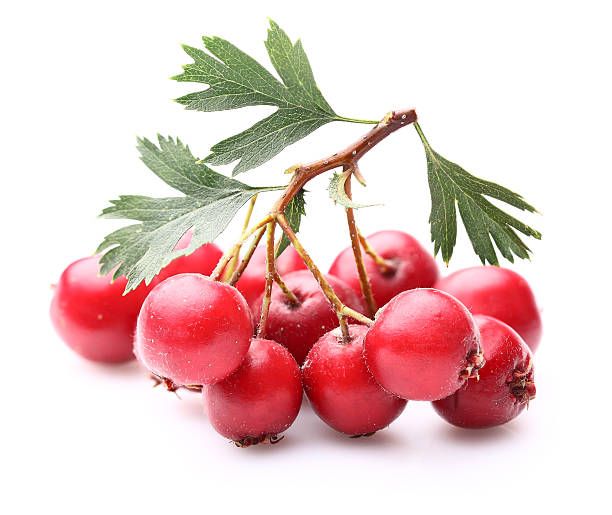

Fruits - berries of a spherical or slightly oblong shape with a retaining calyx, diameter 8-10 mm., With 3-4 seeds, each containing 1 seed. Mealy pulp. The color, depending on the species, is blood red, brownish, orange, pink, yellow or black. The taste is sweet and sour.
Flowering time is May-June.It blooms profusely, but very quickly, sometimes 2-3 days, which makes it very difficult to collect flowers. The fruits ripen in September-October.
Hawthorn begins to bear fruit at the age of 10-15, life expectancy is up to 400 years. Propagated by seeds, root suckers, cuttings.
back to content
Reproduction by layering
To obtain hawthorn seedlings with the help of layering, shoots from 1 to 2 years old are selected. They must be placed in a previously dug groove in the ground. The shoot is settled into a groove so that the top of the plant remains on the surface. The laid shoot is fixed in the ground with a bracket and lightly sprinkled with light, nutritious soil. It is also necessary to overtighten the base of the layering with wire. Gardeners recommend doing this method of reproduction in the spring, as a last resort, at the beginning of summer, so it is possible to get a ready-made seedling in the fall.
Habitat
The hawthorn genus is widespread. The plant can often be found in parks and squares. The blood-red hawthorn is found in the European part of the CIS, Western and Eastern Siberia, up to the Pacific Ocean, in the south - in Kazakhstan.
The plant is light-loving and frost-resistant, grows in the steppe zone, along slopes and ravines, in sparse forests, on forest edges and clearings. It prefers rich, well-moistened soils, so it can be found along the banks of rivers and other bodies of water.
back to content
When is the best time to land
Many people think that in the fall it remains only to harvest the harvest, remove the fallen leaves and you can rest until spring. In fact, the best time to replant the plant is in the fall. At this time, the prices are more favorable and the assortment is larger. Many seedlings are sold with multiple fruits so that the buyer can see what he is buying. In the fall, minimal maintenance is required, as long-term warm weather and regular rains create favorable conditions for rooting.


Photo:
Despite the fact that the plant is in a dormant period, the root system continues to grow until the soil temperature drops below +4 degrees Celsius. The main thing is not to miss the time of planting the seedling, so that the young roots have time to form before the onset of frost. Such roots will grow faster in the spring than those transplanted in the spring. Also, the advantages of hawthorn include the fact that the plant will harden during the winter. Such seedlings will be stronger than their counterparts planted in the spring.


Photo:
When choosing a location, decide on the purpose of the hawthorn. To create a hedge, seedlings must be planted around the perimeter of the site.
"If you want to get a good harvest, choose a well-lit place in the northern part, the plant is not afraid of direct sunlight."
Collection and procurement
For medicinal purposes, flowers, fruits, leaves and bark of hawthorn are used. Flowers are harvested in dry weather at the beginning of flowering, when some of them in the inflorescences have not yet blossomed. You should not pick flowers that have not bloomed at all, as they are difficult to dry and can easily deteriorate. Drying is carried out no later than an hour or two after collection. Dried hawthorn flowers have a faint peculiar smell and a bitter taste. Always store raw materials in a dry place; glassware is best suited for this. Shelf life is 2 years.
The berries are harvested after full ripening and before frost. Drying usually takes 7-8 days. The berries are sorted out and stored in plywood boxes lined with thick paper, boxes, glass containers or thick canvas or paper bags. The yield of dry raw materials is 25-30% of the freshly harvested weight. The shelf life is up to 8 years.
Dried berries are sometimes covered with a whitish bloom, which is not a sign of spoilage, but is a crystallized sugar.The taste of the finished raw material is bitter or slightly sour-sweet, the smell is weak, pleasant.
The bark is harvested from young branches in early spring during sap flow. Shelf life is 2 years.
back to content
How to choose the right cuttings?
Most importantly, you need to choose the right shoot, from which cuttings will be cut in the future. Most budding growers make the big mistake of choosing shoots that grow upward, but make poor cuttings. They simply cannot form a root system. In order to propagate the hawthorn by the grafting method, you need to collect shoots from the side branches that do not grow very actively. Also, when cutting cuttings, one feature must be taken into account: if you take one long shoot and cut it into several parts, then the cuttings that were closer to the part of the base take root. In order for the selected shoots to become good cuttings, there are a number of rules. It is necessary to choose shoots:
- Not frozen.
- Which do not have any damage to the bark.
- Shoots that are ripe, that is, annual. Not desirable, but you can take biennials as well.
- Shoots for grafting should be taken from the middle layer of the hawthorn. It is advisable to take those that grow from the southern part of the tree crown.
- When cutting cuttings, it is necessary to take into account the factor that the length of each should be from 10 to 15 centimeters, and the thickness from 7 to 8 millimeters.
Chemical composition
The fruits of blood-red hawthorn contain vitamins C, K, E. Of the macro- and microelements, potassium, calcium and magnesium are the most important, as well as copper, cobalt, selenium and boron.
In addition, flavonoids (quercetin, hyperin, vitexin), organic acids (citric, oleanolic, ursolic, crategusic, coffee, chlorogenic), carotenoids, pectins, saponins, triterpene and flavone glycosides, acetylcholine, choline , sugars, fatty oils, tannins.
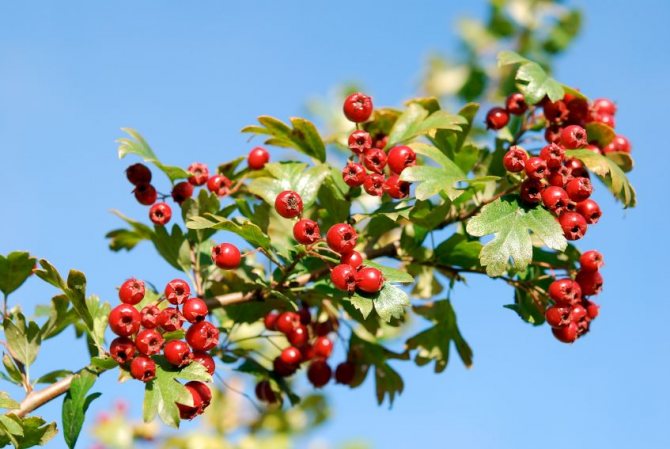

Hawthorn flowers contain flavonoids (quercetin, quercitrin), hyperoside, carotenoids, acetylcholine, choline, trimethylamine, oleanolic, coffee, ursolic, chlorogenic acids, essential oil, tannins.
As for macro- and microelements, in comparison with berries, flowers contain a higher concentration of individual components. Most of all they contain potassium, calcium, magnesium, as well as molybdenum, barium, selenium, boron.
back to content
An unusual way of grafting
Nowadays, some gardeners have started the practice of plant propagation in an unusual but very effective method. This method makes it possible to root even those cuttings that are poorly grafted, for this:
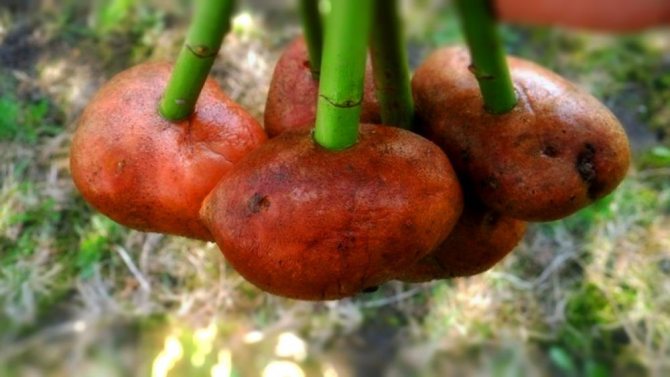

- Hawthorn cuttings are pre-cut.
- Then the potato is taken, from which all eyes are removed so that the potato does not grow.
- After that, a hawthorn stalk is inserted into the potatoes.
- Further, the potato tuber and stalk are placed in the soil and added dropwise.
- The shank is covered with a glass jar on top.
This method is very effective, with this germination the seedlings are supplied with a large amount of nutrients that are obtained from the potato tuber.
As a result of this propagation method, the cuttings are very actively rooting. The resulting seedlings subsequently germinate and form very well.
The hawthorn is blood red. Therapeutic effect on the body
Cardiovascular diseases
Most often, the medicinal properties of hawthorn are used for the treatment and prevention of cardiovascular diseases. The plant's preparations help to reduce blood cholesterol levels and, therefore, can be used as a therapeutic and prophylactic agent for atherosclerosis. In addition, hawthorn helps to reduce the permeability of blood vessels and capillaries.
Flowers and fruits of hawthorn improve blood circulation in the vessels of the heart and brain, act as a vasodilator, relieve spasms of the vessels of the brain. As a result, the supply of these organs with oxygen improves.
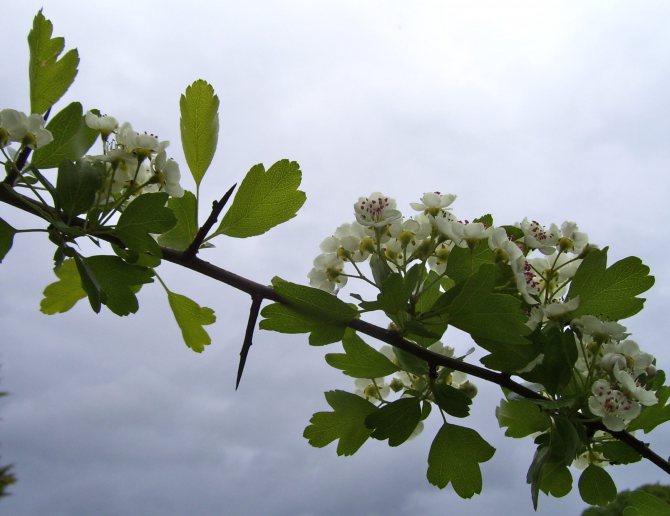

Based on this, hawthorn is used for high blood pressure, especially at the initial stage, it also eliminates dizziness, tinnitus.
Also, plant preparations regulate blood circulation of the whole body and are especially recommended for elderly people with circulatory failure.
The hawthorn is also great for the heart. The plant tones it up, normalizes the rhythm, eliminates discomfort in the heart, shortness of breath, is used to treat functional disorders of cardiac activity, such as cardiovascular insufficiency, angina pectoris, angioedema, atrial fibrillation, paroxysmal tachycardia, extrasystole, fights cardiac neuroses.
In case of cardiovascular diseases, preparations of hawthorn flowers are more effective than fruits.
Gastrointestinal diseases
The medicinal properties of hawthorn have a positive effect on the gastrointestinal tract. The preparations of the plant improve digestion, eliminate flatulence and pain in the intestines, help to normalize stool in case of diarrhea, including in children. Also, for diarrhea, a decoction of the plant bark is used.
Hawthorn is also used for the treatment of various gastrointestinal diseases. It is used, among other things, for the treatment of gastritis of various forms, the elimination of diarrhea with dysentery.
Nervous system
A decoction of hawthorn fruits has proven itself well as a sedative for stress, increased excitability, as well as to eliminate the effects of nervous overstrain.
For the treatment of more pronounced disorders of the nervous system, as well as when connecting symptoms associated with the cardiovascular system, fruit tincture is also used.
Diseases of the thyroid gland
Hawthorn is recommended by official medicine for the treatment of increased thyroid function.
For women
The useful and medicinal properties of hawthorn women will be appreciated. The plant has proven itself well for relieving symptoms (neurosis, suffocation, high blood pressure, etc.) and relieving the course of menopause.
Lactating women use hawthorn preparations in case of insufficient milk production. You can often hear the question: is it possible to use hawthorn during pregnancy. There are no direct indications of this in the special literature. Therefore, you should not risk it and before you start taking plant preparations, it is better to consult with a doctor you trust.
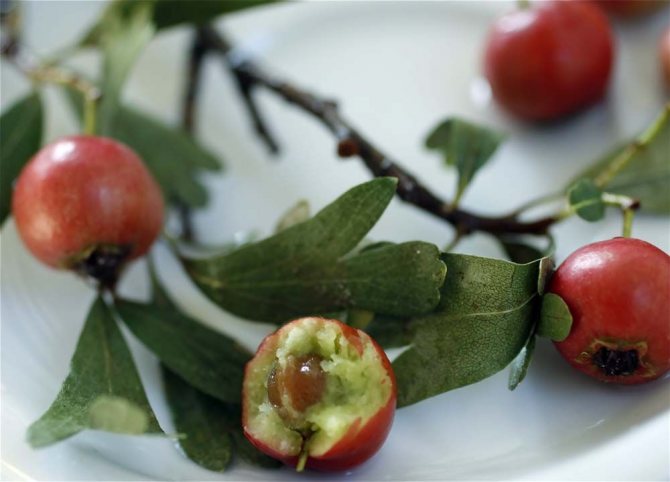

Hawthorn has proven itself well in home cosmetology. Face masks are made of crushed berries, the infusion of flowers is used for wiping. The plant tones the skin, gives it elasticity, normalizes moisture content, relieves swelling. Cosmetic procedures with hawthorn are especially recommended for women over 30 as a prevention of skin aging, as well as at the first age-related changes.
For men
Hawthorn is also useful for men. It is used for the treatment and prevention of prostatitis and prostate adenoma, in the collection for menopause. Fresh berries, jam, decoction (tea) of berries, as well as a tincture of flowers are of great benefit to normalize sexual function and increase potency.
In addition, hawthorn improves the work of the cardiovascular system, which often suffers in men.
For the whole organism
Benefits hawthorn and healthy people. Regular use of the plant's preparations increases immunity, normalizes metabolism in the body (infusion of flowers), helps to cope with overwork and insomnia, and improves overall well-being. They also take hawthorn after suffering serious illnesses to speed up recovery.
back to content
Method of grafting "constriction"
With this method, an already well-formed shoot that has matured is selected. 3 lower leaves are removed from it and just below the bud, the shoot is well pulled with soft wire.
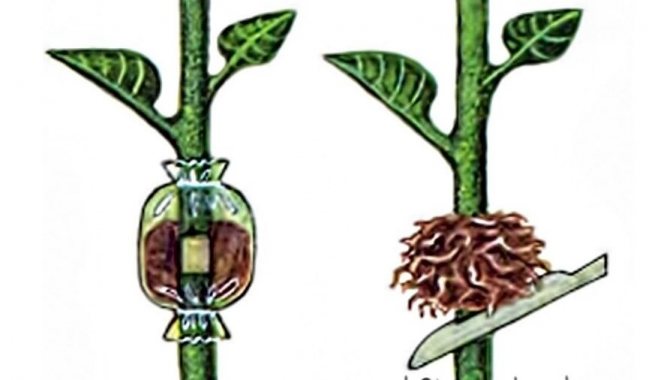

Then you need to take some moss and rinse it well with boiling water. Then add a little garden soil and a couple of drops of a root stimulant to it - this can be heteroauxin. The whole mixture is slightly moistened with water from a spray bottle. Then you need to take a cellophane tape measuring 10 by 20 centimeters, put moss with a peat mixture on it and bandage the shoot with cellophane at the waist. It should look like a cast is being put on the arm. As a result, it should turn out that on the shoot in the area of the constriction, a cocoon of peat mixture should be obtained. In the place where the constriction was made, the process of disrupting the juice of the movement will occur, which passes from the leaves to the roots. The plant, in turn, will begin to fight against the constriction, as a result of which a small influx of tissue will form in this place. As a result, after 2 months, roots will form in the place where there will be a constriction, and after 4 months the entire cocoon of cellophane tape will be pierced with roots. As soon as this happens, you can carefully cut off the shoot from the trunk, just below the waist, remove the cellophane and move the stalk with roots for growing.
Dosage forms
Tincture (fresh berries)
100 g Grind fresh hawthorn fruits, place in a glass jar (preferably dark glass), pour 1 liter. high-quality vodka or 70% alcohol, close with a plastic lid and insist in a dark place at room temperature for 3-4 weeks, shaking occasionally. Strain, squeeze out the contents.
Take 20-30 drops 3-4 times daily before meals.
Hawthorn tincture: application. Diseases of the heart and blood vessels, the nervous system, for women to eliminate the symptoms of menopause.
Tincture (flowers)
The hawthorn flower tincture is prepared similarly to the fresh berry tincture. 200 gr. pour 1 liter of dry or fresh flowers. quality vodka or 70% alcohol. Insist for 7-10 days.
Indication for use. With impotence, take 20-30 drops 3 times a day half an hour before meals.
For rheumatism, take 40-50 drops 3 times a day, half an hour or an hour after meals.
Decoction of fruits
1 tbsp pour 200 ml of hawthorn fruit. water, bring to a boil and simmer over low heat for 15 minutes. Remove from heat, cover, wrap and leave to cool. Strain, squeeze the raw material. Top up the resulting broth with boiled water to the original volume.
Take hawthorn broth for 1 / 3-1 / 2 tbsp. 2-3 times a day half an hour before meals.
Infusion of flowers
1 tbsp pour 200 ml of hawthorn flowers. boiling water, cover, wrap and insist until it cools. Strain, squeeze the raw material.
Take half a glass 2-3 times a day before meals.
back to content
Hawthorn care rules
One of the advantages of hawthorn is the ease of caring for it. Inspect the shrub periodically, and if you find dry, diseased, or excess branches, cut them back. The hawthorn should be pruned every spring to give it a neat appearance or the desired shape. Remove debris from time to time between the trunks of the bush. Bushes are cut at the required level when creating landscape design, or at a height of two meters if the shrub is used as a hedge.
Since the culture tolerates drought well, it is enough to water the bushes once a month with 10-15 liters of water. Excessive watering can lead to rotting of the root system. If the summer is hot, increase the amount of watering. For abundant flowering of hawthorn, additional watering is required during the formation of buds. After each watering, do not forget to loosen the soil in the hole and remove weeds, this contributes to better root nutrition and moisture retention in the ground.
It is necessary to carry out top dressing twice a year: before flowering and after the leaves fall. For feeding, a solution of mullein or bird droppings is used in a ratio of 1 to 10. For large-fruited varieties, feeding is carried out three times: during flowering, during ripening of fruits and in autumn.
Hawthorn. Application in traditional medicine
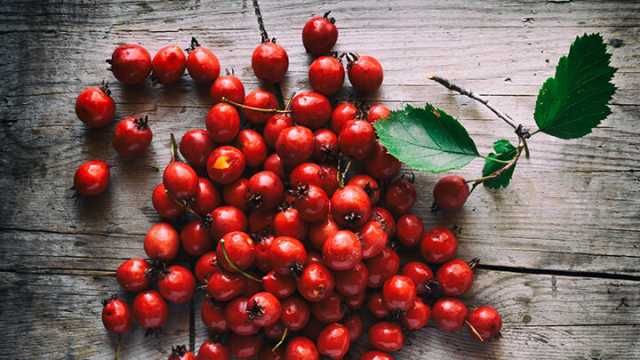

Gastritis
Pour half a glass of hawthorn fruits with boiling water so that it covers them. Cover the dishes with a lid, insulate and let it brew until warm. Eat berries, drink liquid.
Also, this recipe is recommended for pain in the intestines.
Erysipelas
Grind fresh hawthorn fruits to the state of gruel. Apply the resulting mass to the affected skin.
Sowing
Seeds are sown in late autumn, at the end of November. Hawthorn seeds are covered with a strong shell and do not germinate without prolonged stratification, so they are sown only in autumn. During the winter, under the snow, they will naturally ripen and germinate in the spring. True, some will sprout only after a year, and many will not appear on the surface at all, since most of the seeds in hawthorn are sterile.
Sowing preparation:
- Remove seeds from unripe berries.
- Soak in water for three days.
- Mix with a little sand and rub until the surface of the seeds is slightly scratched.
- Make 1% potassium nitrate solution - 1 g. per liter of water.
- Soak the seeds in the fertilizer for two days.
- Sow in a well-loosened bed.
Hawthorn. Contraindications and harm
Hawthorn is well tolerated, non-toxic, does not accumulate in the body and can be used for a long time. Nevertheless, excessive doses of herbal preparations (over 100 drops of tincture) can slow down the pulse, disrupt the rhythm of heart contractions, significantly lower blood pressure and cause depression of the central nervous system. For the same reason, you should not eat more than a glass of fresh hawthorn berries per day.
Contraindications to the use of hawthorn are severe cardiac and kidney disorders. Due to the plant's ability to lower blood pressure, it should be taken with caution in case of hypotension, and it is better to consult a trusted doctor.
back to content
Possible diseases
Like all plants, hawthorn is not immune to pests or diseases. The most common are: Powdery mildew - the formation of a white bloom on the leaves of the plant, which twists the leaves during the drying process. Infected shoots must be cut off and the plant treated with fungicides. After 14 days, re-process the bush;
Leaf spot of different colors (yellow, brown, white) - in all cases, the leaves are affected by small spots, and subsequently dry out. To combat stains, hawthorn is treated with a 1% solution of copper sulfate or copper oxychloride. To prevent infection, the plant is treated in the spring, before the buds appear and in the fall, after the foliage has fallen. It is recommended to burn all infected leaves and sprouts; Apple aphid - spoils young leaves by sucking their juice, which causes the leaves to curl and wither. With such a parasite, you can fight folk remedies (tincture of garlic or tobacco with soap) or buy a solution of karbofos, phosphamide (diluted according to the instructions);
Leafworm - caterpillars feed on leaves, rolling them into tubes with their cobwebs, and then eat the buds, leaves and ovaries. To combat it, treat the hawthorn with chlorophos, and for prophylaxis in the spring, treat it with nitrophen;
Hawthorn butterfly - content with the nectar of a flowering plant and lays eggs on the outside of the leaves, subsequently the caterpillars eat both the buds and leaves. To combat them, Karbofos is used.
Drying fruits
You can dry hawthorn in a special dryer at a temperature of 60 degrees.They also use the oven for this, drying with the door open, and in the sun, spreading it in one layer on the fabric and covering it from flies with gauze, periodically turning over and selecting the spoiled ones. The berries are dried over a battery in cloth bags or in a cardboard box.
Properly dried berries smell good, have a maroon color, shriveled and firm to the touch. Dried fruits are stored for 2 years in bags made of thick cloth, paper or in tightly closed glass jars. The place where the workpieces are stored must be dark and dry, with good ventilation.


Why hawthorn does not bear fruit: possible causes
The main reason for the lack of fruiting in hawthorns is that the tree has not reached the required age. Among others, it should be noted:
- lack of sunlight;
- strong pruning - fruits are formed on the periphery, and not inside the bush.
If the hawthorn is blooming but not bearing fruit, you should put sugar and water next to it to attract insects. It will be useful to plant another bush on the site - although the culture does not require pollinators, in their presence it forms more ovaries.
Important! Tips such as pruning the bark for an early harvest, or somehow injuring the tree, are best left unaddressed.
Plant features
In different varieties, the leaves have a varied shape, size and color. The shrub blooms in June. Ripe fruits can vary in color from orange to black. Ripening occurs in late summer - early autumn. One bush can be harvested up to 5 kg.
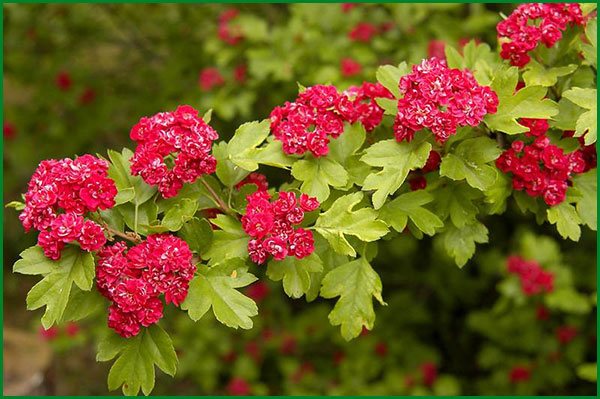

Hawthorn Paul Scarlet
The fruits and flowers have strong medicinal properties. They are used to lower blood pressure, with shortness of breath, asthma, cough, insomnia. Also, the fruits of certain varieties are used to make drinks, jams and dessert dishes.
The maximum fruiting of the shrub is manifested by 10 years.
Attention! It is not recommended to grow apples, cherries, pears and plums near hawthorns, as these trees share common pests.
Hawthorn can be used as a base (stock) for grafting rowan, pear, chokeberry and apple trees.
How to plant a hawthorn: preparation
Cranberries: planting and care in the open field
Many people find planting hawthorn seedlings simple and easy, since the seedling will be 100% accepted, and its growth will be noticeable next year. Whatever it was, but here, too, it has its own technology of planting in open ground, which is better to familiarize yourself with in advance.
First, the landing site is prepared. It is worth doing this half a month before planting. You need to dig a hole up to 80 cm deep, and the width is the size of the root system of the seedling. At the bottom of the hole, you need to create a drainage system up to 20 cm thick. Then, sand, humus, peat are introduced from above. Everything is covered with soil and left until planting.
When planting a seedling, you need to straighten its roots and place it in a hole without damaging them. Next, the bush is dug in and watered.
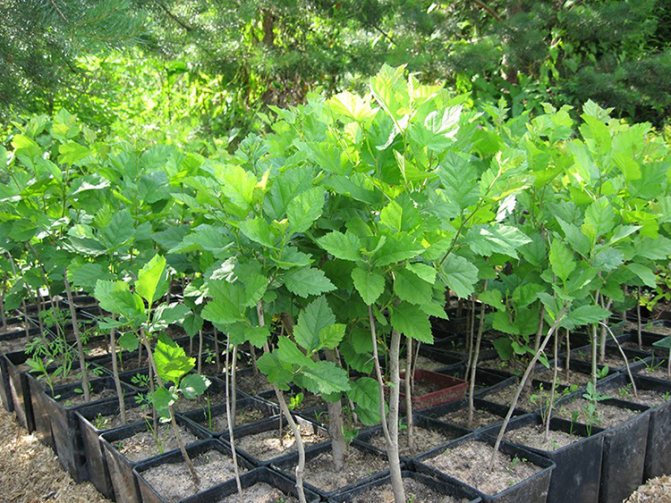

Hawthorn seedlings
Those who want to plant a hawthorn for a hedge should know some of the nuances. For planting, you need to pull out not individual depressions, but a ditch with a strip along the perimeter of the fence. And it is better to plant seedlings close to each other. When the plants grow a little, they are intertwined together to form a living fence.
Reviews about growing hawthorn
A very tasty and large Arnolyu variety, with a decent cherry - there is one. On the occasion, they gave several cuttings, now I keep them in the cellar of the garage and plan to plant them in the spring on pre-planted seedlings on my site. I was surprised by the size of the berries, and the taste did not disappoint - and there are almost no seeds!
matchevik
Hawthorn seeds can be propagated. But at the same time, you will have to wait long enough for the beginning of fruiting and no one guarantees that the seedlings will repeat the mother plant in their characteristics.Grafting is most often used in order to bring the fruiting time closer and multiply the variety you like.
Andy
When our neighbor sowed hawthorns, his son said that he would not wait for the result. And they managed to grow up to 4 m. The difficulty is in one - they germinate in the second year. I have been vaccinated, it is very easy to vaccinate. Grafted red with large thorns on black and mountain ash.
Raven
Hawthorn is a wonderful plant! Not only does it form a beautifully flowering impenetrable hedge, it also endures almost any conditions and any soil, as soon as it takes root. It also tolerates shading (sun, partial shade). Specific hawthorns have varieties and hybrids, with different color of flowers, with a bright autumn color of foliage. There are terry hawthorn hybrids.
gold fish
Hawthorn deserves respect. If a bush of this plant grows in your garden, remember that this is a real gift from nature, a treasure of tasty, healthy fruits that we often do not notice and do not appreciate. And they can strengthen your strength and health. It is not difficult to grow a hawthorn; even a novice gardener can cope with simple rules of care.
Photo gallery
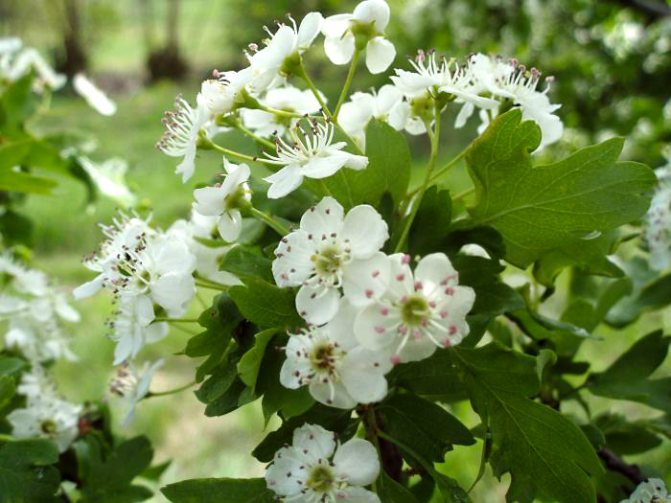

Photo 1. Common hawthorn during flowering
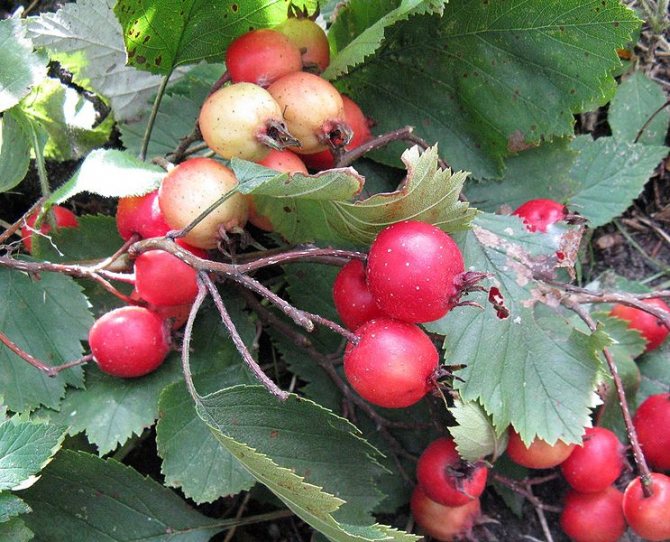

Photo 2. Different stages of ripening of hawthorn fruits
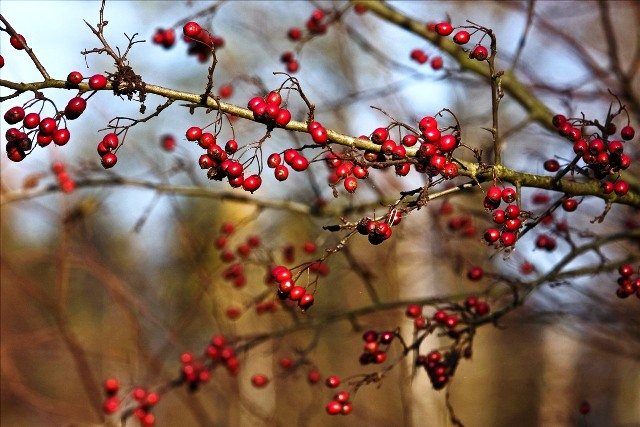

Photo 3. Ripe fruits in late autumn
Pear
What types of hawthorn are known? Pear. The most common habitat for hawthorns is the midwest of the United States. In this area, the height of the plant is 11 meters, its branches are straight with thorns that grow up to 5 centimeters. The pear hawthorn has dense white inflorescences. This type of plant has red fruits. Their size reaches 10 millimeters in diameter. A distinctive feature of the pear hawthorn is that it is not as hardy as the common and Altai hawthorn. Therefore, in Russia, it is recommended to plant it only in southern regions with a warmer climate.
When to plant hawthorn - in spring or autumn
Gardeners practice both autumn and spring planting of hawthorn. The main thing is to choose the right time. In central Russia, stable warm weather comes in the 10th of April, this is the most favorable time for planting work. Experts agreed that a hawthorn bush, planted in spring, matures faster, builds up a powerful root system and a dense crown, and tolerates wintering more easily.
Autumn planting is done in mid-October so that the seedling has a few weeks to take root before the first severe frosts. Planting the hawthorn correctly in the fall guarantees rapid growth in the spring.
There are gardeners who successfully transplant hawthorns in summer, however, the rooting process in this case is much more difficult, especially in the heat.
Pests. How to deal with them
Common juniper: description, properties and application
Hawthorn is a shrub with a rather weak immune system: the tree is exposed to a large number of pests. The shrub is a host for parasites such as:
- fruit sawfly;
- aphid;
- shield;
- apple blossom beetle;
- cherry weevil;
- hawthorn fruit leaf beetle;
- kidney mite;
- pear mite
- nematodes;
- moths; archers
- and other pests.
Among the fungal diseases of hawthorn, the following are distinguished:
- powdery mildew;
- rust;
- black;
- mummification of fruits;
- spotting.
Against most pests, the drug karbofos is used, which is used to treat the shrub in the spring, before flowering. It is recommended to spray the tree in the morning or at night. Also, cytkor is used to combat parasites.
What kind of care is needed
Hawthorn does not require much maintenance. But it is important to remove dry and diseased branches, as well as prune it. By the way, the shrub is well-trimmed, it can even be used as a hedge. To do this, when pruning, leave 3 part of the shoot.
As a rule, haircuts are carried out in the spring. With pruning, you can shape the shrub into any shape.
In the spring, before flowering, it is advisable to fertilize the hawthorn with slurry. In this case, it is enough to water the tree once a month, but abundantly! Each shrub needs up to 20 liters of water, and in dry times, water it twice a month.
Loosen the ground periodically, remove weeds. In the spring and autumn, dig up the soil on the bayonet of a shovel, and if you do it in the summer, then in this case the maximum digging depth is 15 cm.
Morphological signs
Common hawthorn is quite simple to define, nevertheless, we give a detailed description of this plant. The main distinguishing feature of the bush are thorns, which are modified shoots. Their length does not exceed 2.5 cm, and leaves may appear on them. At the end of the season, the thorns become coarse and harden.
The leaves of the bush are obovate. Above, their surface has a dark green color, and on the back side it is almost white. The size of the leaves can reach 8 cm, there is slight pubescence on the petioles. On the shoots, the leaves are opposite.
Landing patterns
The close proximity to this plant is not shown. A well-developed root system requires that the bush be planted from the nearest neighbors at a considerable distance - 5-7 meters from tall and medium-sized trees, 3-5 meters from shrubs and at least two from vegetable plantings.
With other shrubs of the same kind, for example, for growing hedges, an acceptable distance is one and a half to two meters. It is better to orient such plantings from north to south.
It must be understood that the formation of a green fence does not contribute to active fruiting. With thickening plantings and constant pruning, fruit ripening will decrease.
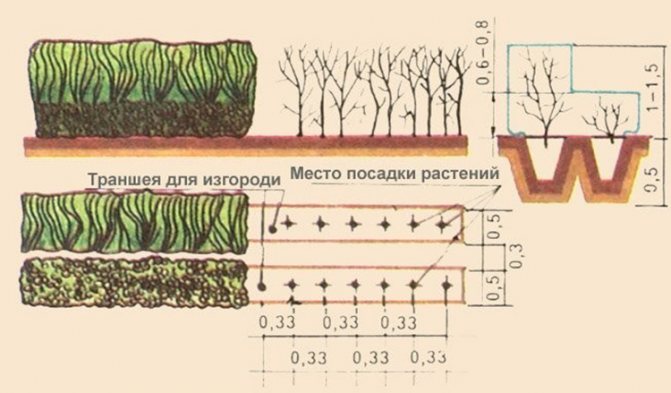

Site preparation
Preliminary work before planting the hawthorn does not take much time. This useful plant is planted in a deep hole, which should be prepared in advance:
- a planting hole is dug about a meter deep;
- you can spill it with boiling water or treat it with chemical disinfectants;
- the bottom is covered with a twenty-centimeter drainage layer - expanded clay, gravel or crushed stone;
- the lower layers of the planting pit are limed so that the roots do not come into contact with the lime layer in the first years of the plant's life - a small amount of drainage on top is enough;
- The planting mixture, which will be sprinkled with the roots of the plant, should consist of equal parts of sand, peat, humus and other vegetable mulch.
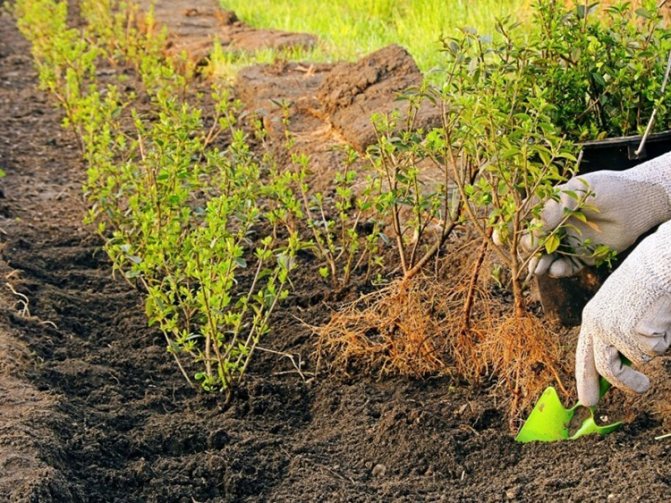

What year after planting does the hawthorn bear fruit?
When the hawthorn begins to bloom and bear fruit depends on the species. This usually happens no earlier than 6-7 years after planting. There are species that begin to form buds for 10-15 years.
Interesting! Large-fruited hawthorns bloom much earlier than those with small berries.
First of all, the first harvest is the hawthorn, which is sometimes called the Chinese hawthorn. Grafted specimens can bloom at 3-4 years of age.
Even hawthorns of the same species can bloom with a difference of 1-2 years. Gardeners noticed a pattern - the larger the crown of the plant, the earlier fruiting begins.
